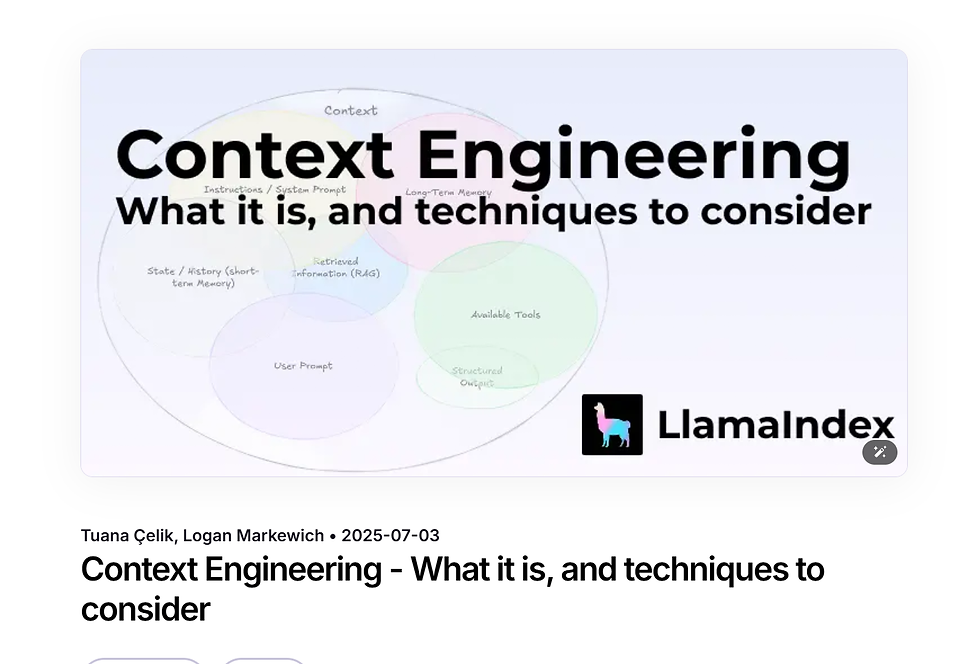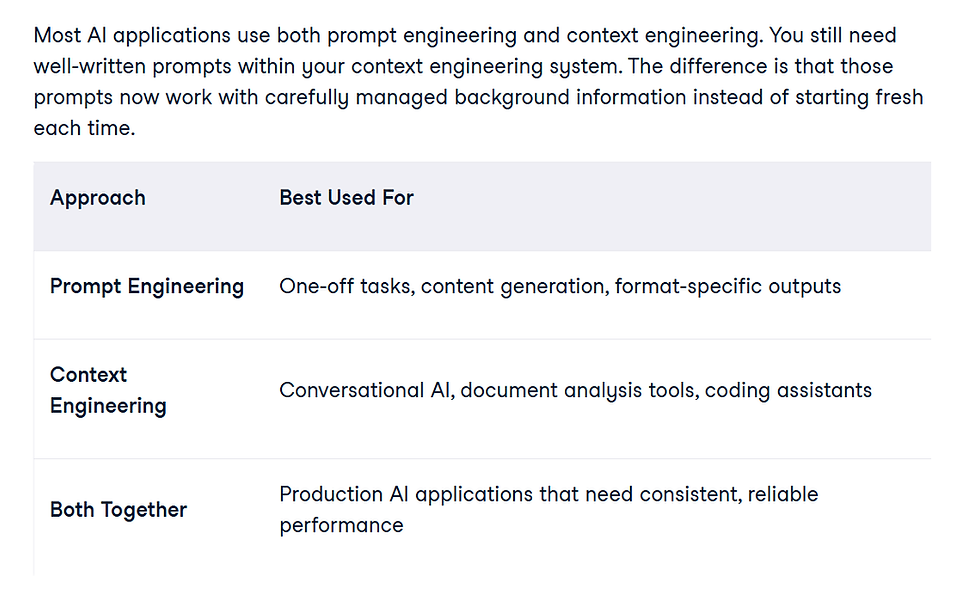From Context Engineering to Organizational Knowledge Management Reconstruction
- Judy

- 3 hours ago
- 5 min read
Introduction: The Awakening of HRBP in the Era of Human-Machine Capital in Knowledge Management Paradigm
As AI evolves from an "assistant tool" to a "digital employee," the underlying logic of enterprise management has shifted from "human capital optimization" to "human-machine capital symbiosis." HRBP (Human Resources Business Partner), as the core hub connecting business and human resources, now faces unprecedented challenges: How can AI understand the unique DNA of an organization? How can the boundaries of collaboration between human employees and digital employees be balanced? How can context engineering be transformed from a technical concept into a core organizational competency?
This article will explore, from the perspective of HRBP, how to reconstruct the human-machine collaboration ecosystem through context engineering with the support of enterprise-level AI platforms like LyndonAI. It will reveal how HRBP can evolve from an "administrative role" to a "human-machine capital architect," ultimately driving strategic transformation for enterprises in the intelligent era.

Part 1: The Cognitive Revolution of HRBP in the Era of Human-Machine Capital—From "Managing Human Resources" to "Governing Ecosystems"
(1) Three Disruptive Challenges Facing HRBP
1. Explosion of Management Complexity: The Breakthrough Path for HRBP in the Era of Human-Machine Capital, Traditional HRBP deals with a two-dimensional system of "human employees + organizational structure." In the era of human-machine capital, the management scope expands into a three-dimensional ecosystem of "human employees + digital employees + data assets." For example:
•A manufacturing company's HRBP must simultaneously manage 300 technical workers, 50 intelligent inspection robots, and 10GB of daily operational data.
•Core contradictions: There is no mature framework for evaluating digital employees' "skill assessment," "performance evaluation," or "cultural integration." For instance, how to quantify the "algorithm iteration efficiency" of an Optima robot? How can the "knowledge asset value" of the Kora knowledge base synergize with human experience?
2. Paradigm Shift in Value Creation LogicIn the era of human capital, value stemmed from "individual capability × organizational synergy." In the era of human-machine capital, the value formula evolves into "(human innovation + AI computing power) × context matching degree." For example:
•A bank's HRBP found that when AI handled 80% of customer data cleaning, human account managers' customer satisfaction increased by 45%—but only if the AI accurately understood contexts like "customer risk preferences" and "regional regulatory differences."
•Key bottleneck: Traditional process designs lack interfaces for "human-machine division of labor," leading to collaboration gaps. For example, in recruitment, AI resume screening and human interviewer evaluation standards are misaligned, creating a disjointed candidate experience.
3. Migration of Organizational Capability CarriersIn the industrial era, organizational capabilities were embedded in "apprenticeship systems" and "standard operating manuals." In the intelligent era, they rely on "human-machine collaboration pattern libraries" and "dynamic knowledge graphs." For example:
•An internet company's HRBP observed that the onboarding cycle for new customer service agents shortened from 3 months to 1 week, thanks to the Kora system's combination of "AI response rules + human-optimized scripts."
•Transformation pain point: Tacit knowledge (e.g., "how to negotiate salaries") and explicit data (e.g., "salary databases") lack structured connections, hindering effective knowledge transfer.
(2) Context Engineering: The Key to HRBP's Breakthrough
Context engineering dynamically integrates "data, memory, and tools" to construct a "cognitive map" for AI to understand the enterprise. It fundamentally helps HRBP solve three core problems:
Part 2: How HRBP Can Lead Context Engineering—From Technical Application to Strategic Design
(1) Building a Three-Layer Context Pyramid
1. Foundational Layer: Establishing the Organization’s "Digital DNA"
•
Making Strategy and Culture Explicit: Translate abstract cultural values into AI-understandable constraints.
•Example: A tech company’s HRBP requires AI-generated employee incentive plans to include "non-monetary rewards ≥ 30%."
•Case: LyndonAI’s Kora system uses "cultural keyword tagging" to ensure candidate-organization cultural fit, improving matching accuracy by 35%.
•
Mapping Competency Models: Build a synergy map of "human capabilities + AI capabilities."
•Implementation: LyndonAI’s GraphRAG technology links "competencies → training courses → AI tools" to create personalized development paths.
2. Integration Layer: Connecting the "Context Lifeblood" of Business
•
Dynamic Data Middle Platform: Integrate HRIS, CRM, and IoT data into a "human-machine collaboration data lake."
•Example: A retailer’s HRBP used Fusion to combine store sales data, staff service records, and inventory turnover, improving workforce efficiency by 22%.
•
Intelligent Process Redesign: Redefine human-machine roles in core HR processes.
mermaid
图片代码
graph LR A[Recruitment] --> B[AI Resume Screening] A --> C[Human Cultural Fit Interview] D[Performance] --> E[AI Data Dashboard] D --> F[Human Goal Setting]
Recruitment
AI Resume Screening
Human Cultural Fit Interview
Performance
AI Data Dashboard
Human Goal Setting
3. Interaction Layer: Scripting Human-Machine "Collaboration Playbooks"
•Conversational Decision Support: VibeChat’s "context-aware engine" auto-fetches relevant data (e.g., budget constraints, talent supply metrics).
•Conflict Resolution: TRISM enables "context tracing → expert input → divergence analysis" to resolve disputes (e.g., AI-recommended layoffs vs. management’s retention strategy).
(2) Four Core Competency Upgrades for HRBP
1.Context Translation: Bridge business and technical language (e.g., explain "vector search" as "talent data deep-dive").
2.Ecosystem Governance:
•Digital employee "onboarding": Create virtual employee handbooks and cultural fit tests.
•Human-machine team "relationship management": Design collaboration reward systems.
3.Continuous Evolution:
•Monitor context quality with RAGAS framework.
•Implement A/B testing for optimal context combinations (e.g., AI + handwritten feedback boosts acceptance by 41%).
4.Ethical Guardianship:
•Enforce data minimization and auto-deletion of sensitive contexts.
•Combat algorithmic bias (e.g., gender fairness audits increased female tech hires from 28% to 49%).
Part 3: LyndonAI Empowers HRBP—From Tool to Symbiotic Partner
(1) Synergistic Value of Four Core Systems
System | Application Scenario | Performance Gains |
VibeChat | Cross-team collaboration | 30% faster communication |
Fusion | High-potential talent assessment | 60% faster data retrieval |
Optima | Automated HR tasks | 70% time savings |
Kora | Knowledge institutionalization | 50% shorter onboarding |
(2) Future Integration Directions
1.Predictive Context Suggestions: Auto-push turnover rates/recruitment metrics.
2.Emotion-Aware Interaction: VibeChat adapts responses to HRBP’s stress levels.
3.Cross-Industry Context Networks: Share anonymized templates (e.g., "manufacturing attrition prevention playbooks").
Part 4: HRBP’s Future Vision—From Executor to Ecosystem Leader
Strategic Evolution Roadmap
Phase | Goal | Case Example |
Short-term | Maximize human-machine efficiency | Cut hiring cycles from 45 to 20 days |
Mid-term | Fuse human-AI capabilities | Develop AI mock interview systems |
Long-term | Reorganize organizational structures | Build distributed "AI brain + human lead" retail networks |
Conclusion: Defining the Soul of Human-Machine Symbiosis
When AI handles repetitive tasks, HRBP’s value lies in defining "why we work." When context engineering builds AI’s cognitive framework, HRBP’s mission is to clarify "for whom we work." This transformation from HR business partner to human-machine ecosystem architect is not just a role upgrade—it’s a redefinition of organizational soul, ensuring intelligent enterprises operate with both efficiency and humanity.
"HRBP’s ultimate competitive edge isn’t just mastering AI tools, but cultivating the wisdom to make humans and machines thrive together."This is the core imperative of the human-machine capital era. HRBP will also help to transform from Context Engineering to Organizational Knowledge Management Reconstruction.

Comments